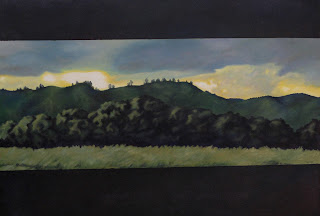As I come to the end of the
100 Days project I'm thinking about what I have gained from the experience and what I might do if I was to do it again. I'm already planning a few shorter projects to do on my own because it's a great way to get things happening and to achieve a particular task.
So, as the project draws to an end - only 15 days to go - here are my thoughts on an insight I have gained from participating in this project:
One of the reasons I wanted to be disciplined to draw everyday is because, having returned to my arts practice after a long break, I have wanted to get back to doing some illustration work and I wanted to develop my own style and polish my skills. I haven't drawn much at all for a long time so I was feeling very rusty and doubtful. Very early on in the project however, when I had completed perhaps 2 or 3 pages, I shared my book with others at an artists' network meeting and the feedback I received made me realise that I did, in fact, already have a "style" to my work. It also made me appreciate and accept (at long last) that no matter how I might try or think otherwise, I still have an intense attention to detail. It's how I work, it's what I do. I suddenly realised "why fight it? Just accept it and make the most of it."
So, my insight was of acceptance of my way of working.
You can view my earlier post on this project
HERE.
A number of us will be exhibiting our projects down at Britomart in Auckland City on Day 100, September 14th 6 -10pm. It will also be open for viewing on Sunday 15th until 4pm.
In the meantime here are a few of my highlights since Day 50.
 |
| Day 51 |
 |
| Day 57 |
 |
| Day 59 |
 |
| Day 69 |
 |
| Day 72 |
 |
| Day 74 |
 |
| Day 80 |
 |
| Day 81 |
 |
| Day 84 |







































